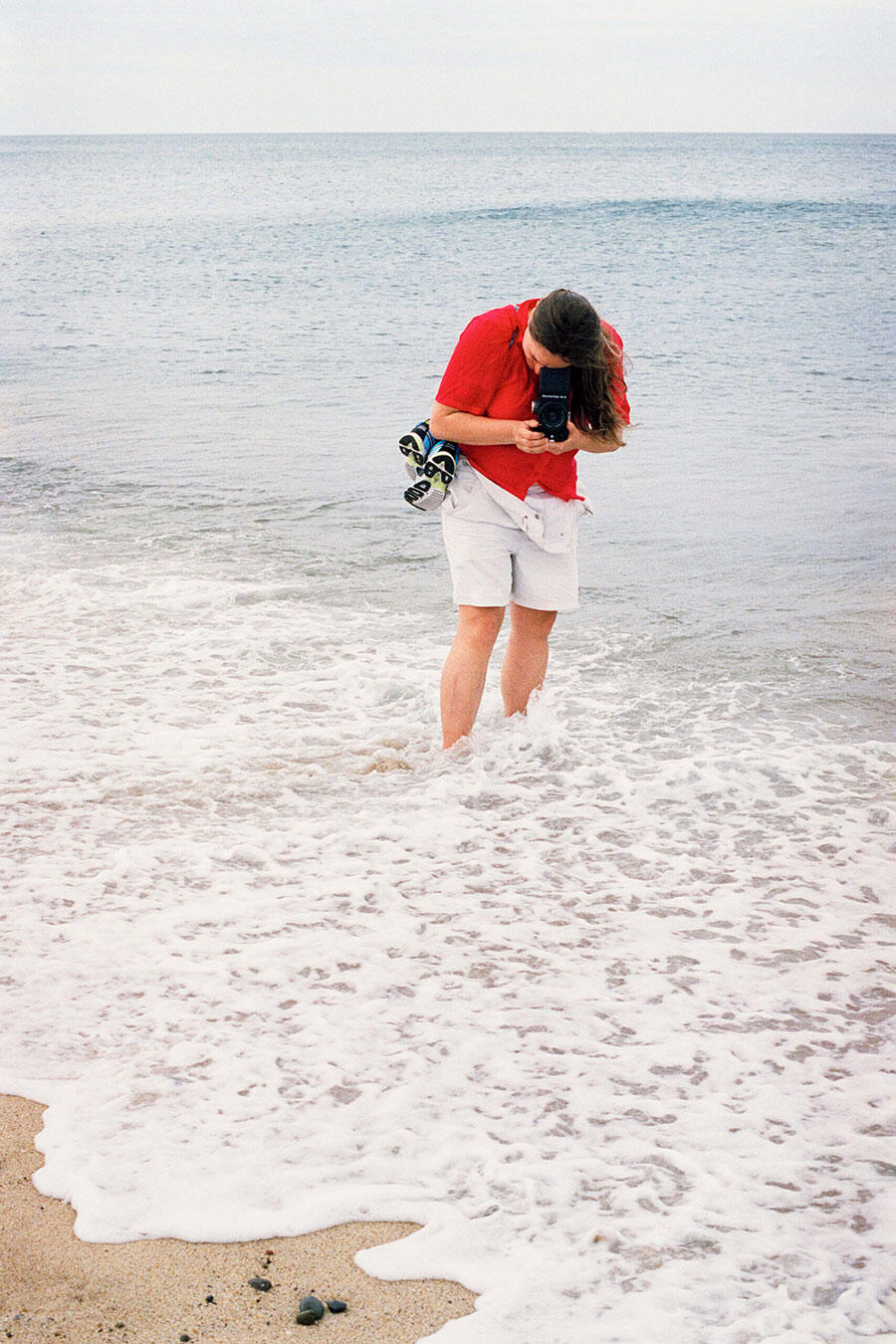Reconstructing Kathrin Sonntag’s and Gabriele Münter’s Critical Lens
In a new show at Marta Herford, the photographers traverse archives and foreign lands to question what it really means to look
In a new show at Marta Herford, the photographers traverse archives and foreign lands to question what it really means to look

‘Kathrin Sonntag and Gabriele Münter: The Travelling Eye’ presents two German artists, both born in Berlin, yet a century apart. While Sonntag is known primarily for her photography, Münter is widely recognized for her association with the German expressionist group Der Blaue Reiter. Far more attention has been given to Münter’s paintings, but it is her photographs that form the focus of this exhibition, curated by Sonntag alongside her own work. The show borrows its title from Sonntag’s video The Travelling Eye (2024), based on photographs she took of Münter’s snapshots through a magnifying glass. The projection highlights unexpected details in the artist’s images, such as the clasped hands of a sitter or the way light falls on a scene. By pairing Münter’s photographs with ones from her own archives, Sonntag creates an uncanny dialogue between the artists that poses the question: What does it mean to look?

‘Why take pictures at all if, in the process, one misses – at least in part – the real experience,’ Sonntag wonders in her video The Travelling Eye – Travelogue (2024). The first works we encounter in the show suggest that the ‘real experience’ on display here is the act of making the photographs. To the left, Sonntag’s Nina at the Beach, USA (2012) is joined by Wassily Kandinsky’s Münter at the Beach, Holland (1904). Although Münter is often discussed in relation to Kandinsky, her former partner and collaborator, Sonntag deliberately minimizes this aspect of her life in the exhibition. To the right, Münter’s Girl with Braids Sitting on a Porch, Moorefield, Arkansas (1900) is juxtaposed with Sonntag’s Sarah on her Fourth Birthday, Berlin (2022), the child’s patterned shirt in the latter echoing the shadows created on the porch in the former. The flow between the colour and black and white photographs, hung on walls painted in saturated tones drawn from Münter’s own palette, emphasizes their visual synchronicities.

The groupings of photographs give the show its underlying structure. Through them, the viewer follows the artists as they traverse archives and foreign lands. While Münter’s photographs were all taken in the US, documenting a trip with her sister Emmy between 1899 and 1900, we also move with Sonntag’s images through Germany, Mexico and Italy. Our eye glides from Münter’s Small Girl in her Sunday Dress on a Street, back view, St. Louis (1900), capturing a curly haired child looking at a shopfront, to Sonntag’s Woman in Red Coat, Venice (2013), a seeming inverse of Münter’s image that portrays an older woman with red hair facing a brick building. The exhibition allows for chance connections between photographs that are remarkably different: Münter’s Seated Couple in an Interior (Married Couple Wade?), Moorefield, Arkansas (1900) hovers over Sonntag’s Marie and Naomi in Contreras, Mexico City (2016), who pose informally on the street behind their dry cleaning. The dynamic installation and the varying scale of the juxtaposed images heightens the unusual parallels between the artists’ respective practices.

To conclude the exhibition, Sonntag responds directly to Münter’s work with a new commission. Inside a darkened gallery, Münter’s painting Zinnias with Ship of Fortune (1931) is presented alongside Sonntag’s Flowers for Gabriele (2024), an installation of a wooden table with a vase of fresh flowers, which are continuously replenished throughout the show. Referring to the subject of Münter’s painting, this parting gesture could also read like a memorial – a bouquet of flowers left by a loved one’s grave. Sonntag commemorates Münter’s perspective while paying homage to the acts of looking, too.
‘Kathrin Sonntag and Gabriele Münter: The Travelling Eye’ is on view at Marta Herford until 12 January 2025
Main image: Kathrin Sonntag, The Travelling Eye, 2024, digital image projection based on photographs by Gabriele Münter. Courtesy: the Gabriele Münter and Johannes Eichner Foundation, Munich


















